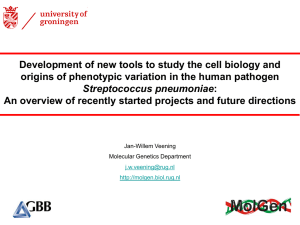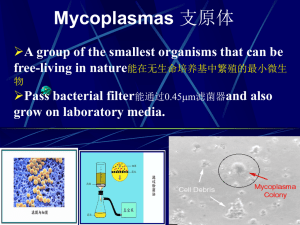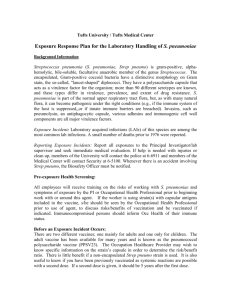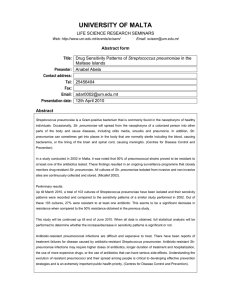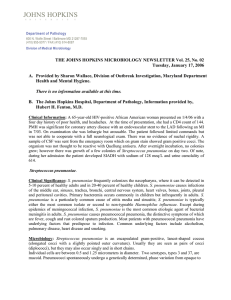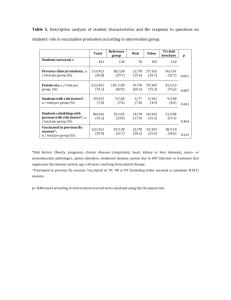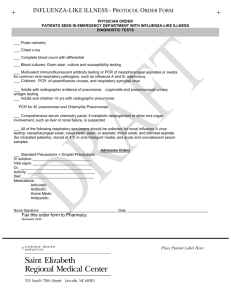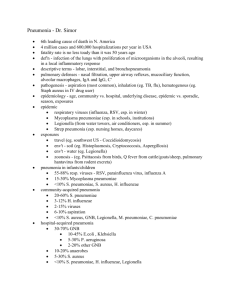CASE STUDY chapter 4
advertisement
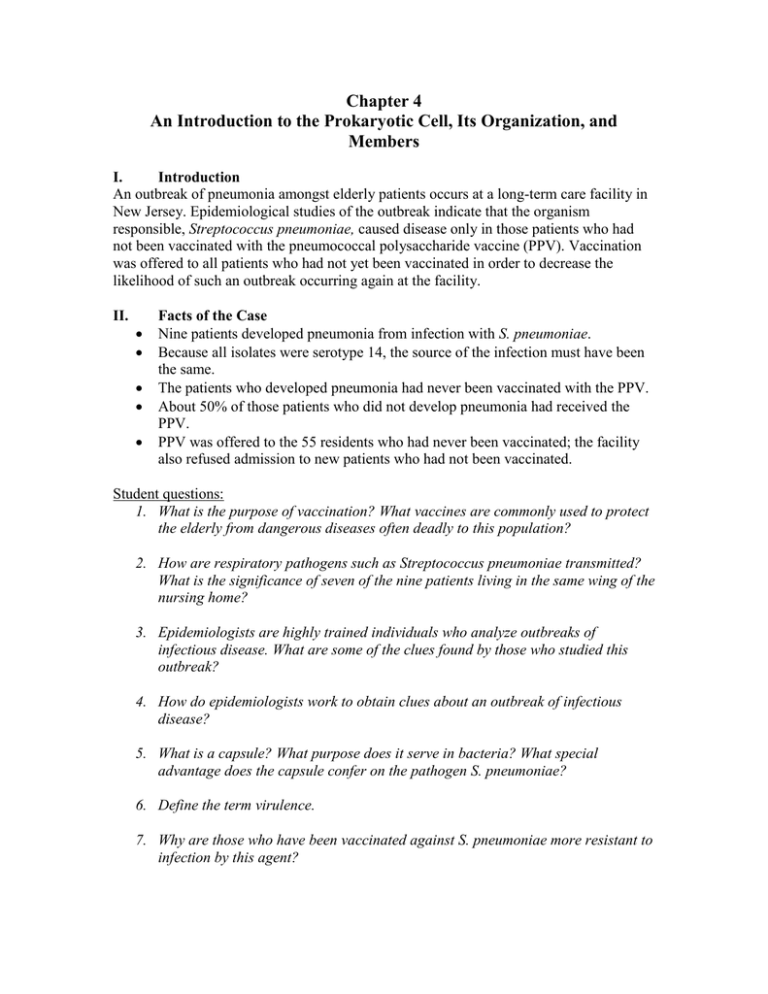
Chapter 4 An Introduction to the Prokaryotic Cell, Its Organization, and Members I. Introduction An outbreak of pneumonia amongst elderly patients occurs at a long-term care facility in New Jersey. Epidemiological studies of the outbreak indicate that the organism responsible, Streptococcus pneumoniae, caused disease only in those patients who had not been vaccinated with the pneumococcal polysaccharide vaccine (PPV). Vaccination was offered to all patients who had not yet been vaccinated in order to decrease the likelihood of such an outbreak occurring again at the facility. II. Facts of the Case Nine patients developed pneumonia from infection with S. pneumoniae. Because all isolates were serotype 14, the source of the infection must have been the same. The patients who developed pneumonia had never been vaccinated with the PPV. About 50% of those patients who did not develop pneumonia had received the PPV. PPV was offered to the 55 residents who had never been vaccinated; the facility also refused admission to new patients who had not been vaccinated. Student questions: 1. What is the purpose of vaccination? What vaccines are commonly used to protect the elderly from dangerous diseases often deadly to this population? 2. How are respiratory pathogens such as Streptococcus pneumoniae transmitted? What is the significance of seven of the nine patients living in the same wing of the nursing home? 3. Epidemiologists are highly trained individuals who analyze outbreaks of infectious disease. What are some of the clues found by those who studied this outbreak? 4. How do epidemiologists work to obtain clues about an outbreak of infectious disease? 5. What is a capsule? What purpose does it serve in bacteria? What special advantage does the capsule confer on the pathogen S. pneumoniae? 6. Define the term virulence. 7. Why are those who have been vaccinated against S. pneumoniae more resistant to infection by this agent? 8. The PPV is made up of what components from S. pneumoniae? The vaccine protects against how many different serotypes of this organism? How many serotypes does the vaccine not protect against? 9. Is it significant that the serotype of S. pneumoniae found in all patients was the same (serotype 14)? How might a S. pneumoniae carrier have played a role in this outbreak? 10. What are phagocytes and what is their function in the body? 11. What other bacterial species produce a capsule for protection against phagocytes? Do these capsules vary in their composition? Are capsules unique to bacteria, or can they be found in other types of microorganisms? 12. Not all of the patients had S. pneumoniae present in their blood cultures. Two of the nine were culture negative in their blood but had gram-positive diplococci present in their sputum. In the seven patients who were positive in their blood cultures, how did the organism cross from the lungs into the bloodstream?
